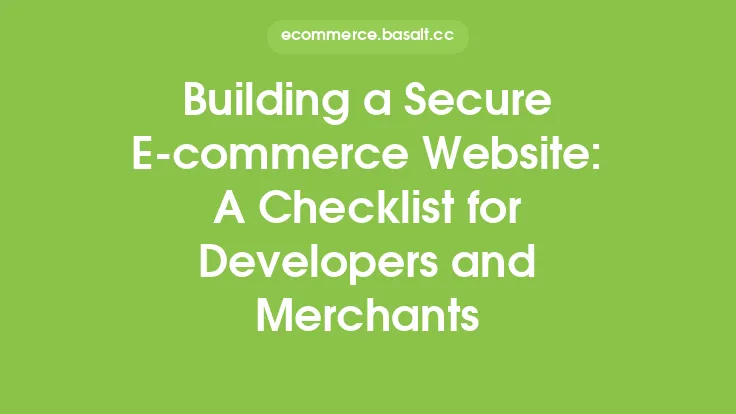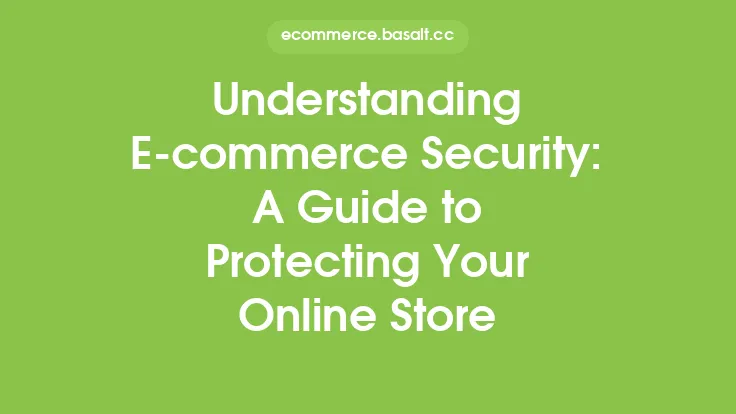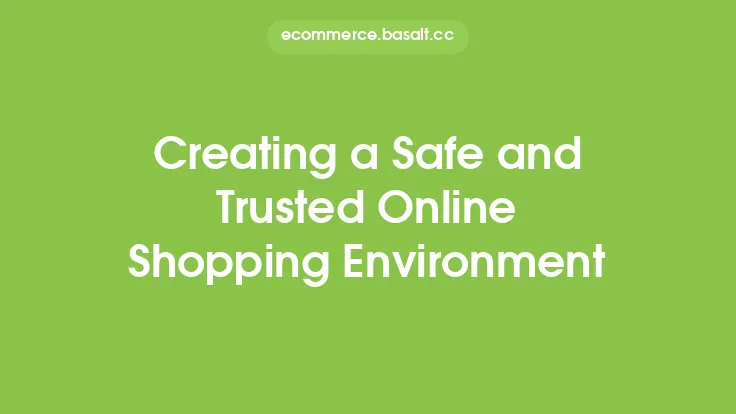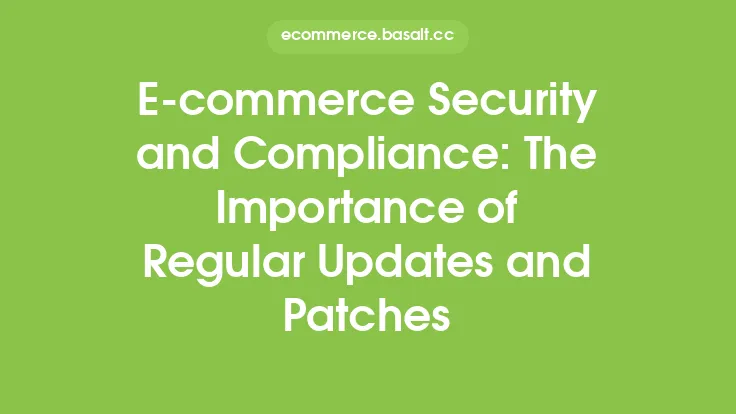As an e-commerce business owner, ensuring the security of your website is crucial to protect your customers' sensitive information and maintain their trust. A secure website not only safeguards your customers' data but also helps to prevent financial losses and damage to your reputation. In this article, we will provide a comprehensive checklist to help you ensure a safe online shopping experience for your customers.
Introduction to E-commerce Website Security
E-commerce website security is a critical aspect of online business, and it requires a multi-faceted approach to protect against various types of threats. A secure e-commerce website should have several layers of protection, including network security, application security, and data security. Network security involves protecting your website and servers from unauthorized access, while application security focuses on securing your website's code and functionality. Data security, on the other hand, involves protecting your customers' sensitive information, such as credit card numbers and personal data.
Assessing Your E-commerce Website's Security
Before you can implement security measures, you need to assess your website's current security posture. This involves identifying potential vulnerabilities and weaknesses that could be exploited by hackers. You can use various tools and techniques to assess your website's security, including vulnerability scanning, penetration testing, and security audits. Vulnerability scanning involves using automated tools to identify potential vulnerabilities in your website's code and configuration. Penetration testing, on the other hand, involves simulating a hacking attack to test your website's defenses. Security audits involve reviewing your website's code, configuration, and security practices to identify areas for improvement.
Implementing Security Measures
Once you have assessed your website's security, you can implement various security measures to protect against threats. These measures include:
- Using a web application firewall (WAF) to protect against common web attacks, such as SQL injection and cross-site scripting (XSS)
- Implementing a secure sockets layer (SSL) or transport layer security (TLS) protocol to encrypt data in transit
- Using strong passwords and authentication mechanisms, such as two-factor authentication, to protect against unauthorized access
- Regularly updating and patching your website's software and plugins to prevent exploitation of known vulnerabilities
- Implementing a content security policy (CSP) to define which sources of content are allowed to be executed within a web page
- Using a security information and event management (SIEM) system to monitor and analyze security-related data
Protecting Customer Data
Protecting customer data is a critical aspect of e-commerce website security. This involves implementing various measures to safeguard sensitive information, such as credit card numbers, personal data, and login credentials. Some of the measures you can implement to protect customer data include:
- Using encryption to protect data in transit and at rest
- Implementing a secure payment gateway to protect credit card information
- Using tokenization to replace sensitive data with tokens or placeholders
- Implementing access controls, such as role-based access control, to limit access to sensitive data
- Regularly monitoring and analyzing security-related data to detect potential security incidents
Regular Security Audits and Testing
Regular security audits and testing are essential to ensure the ongoing security of your e-commerce website. This involves regularly reviewing and updating your website's security practices, as well as testing your website's defenses against potential threats. Some of the activities you can perform to ensure regular security audits and testing include:
- Regularly reviewing and updating your website's security policies and procedures
- Performing vulnerability scanning and penetration testing to identify potential vulnerabilities
- Conducting security audits to review your website's code, configuration, and security practices
- Participating in bug bounty programs to encourage responsible disclosure of security vulnerabilities
- Staying up-to-date with the latest security patches and updates for your website's software and plugins
Incident Response and Management
Despite your best efforts to secure your e-commerce website, security incidents can still occur. Therefore, it's essential to have an incident response and management plan in place to quickly respond to and contain security incidents. This plan should include procedures for:
- Detecting and reporting security incidents
- Containing and eradicating security threats
- Recovering from security incidents
- Post-incident activities, such as reviewing and updating security policies and procedures
- Communicating with stakeholders, such as customers and partners, about security incidents
Conclusion
Ensuring the security of your e-commerce website is an ongoing process that requires regular monitoring, testing, and updating of security practices. By following the checklist outlined in this article, you can help protect your customers' sensitive information and maintain their trust. Remember to regularly review and update your website's security policies and procedures, and stay up-to-date with the latest security patches and updates for your website's software and plugins. With a secure e-commerce website, you can provide a safe online shopping experience for your customers and help to prevent financial losses and damage to your reputation.





